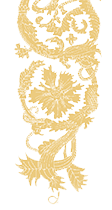18th Century Bookcase
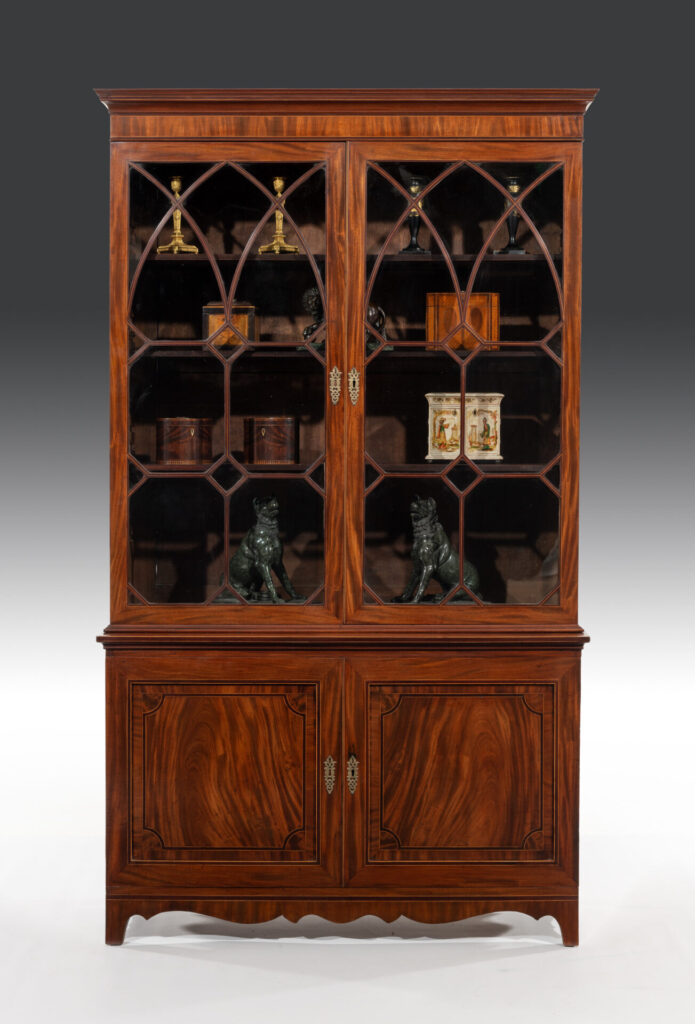
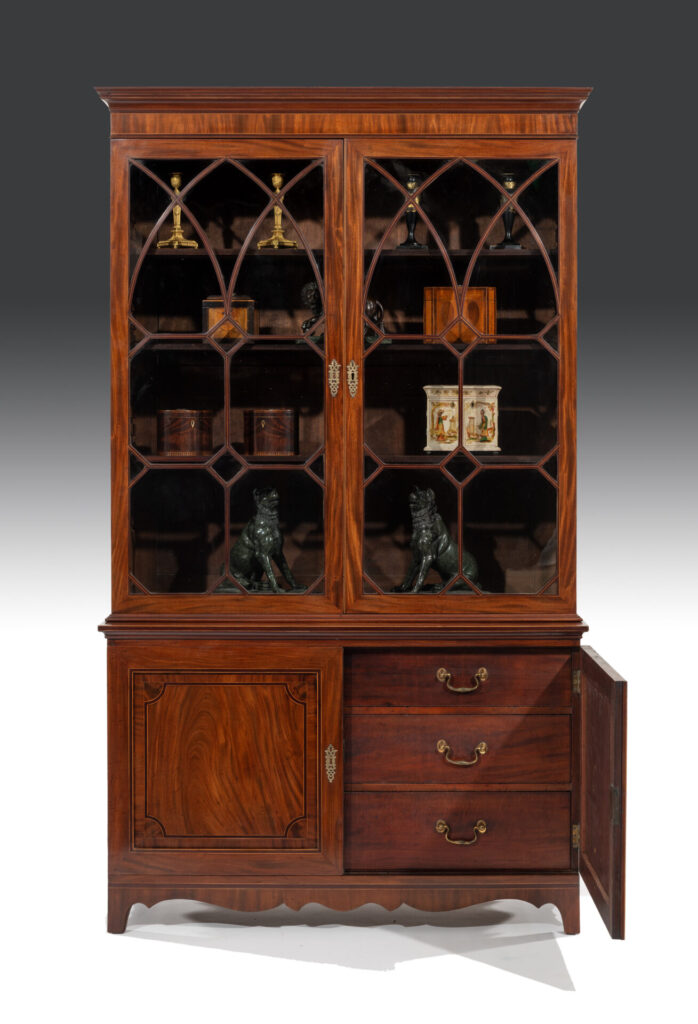
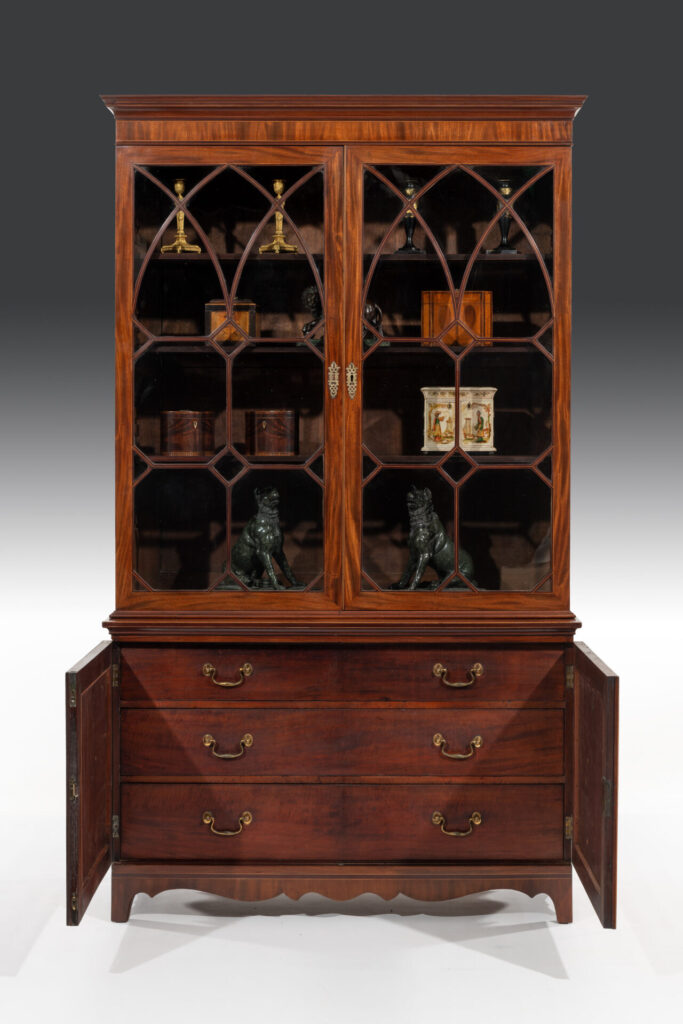
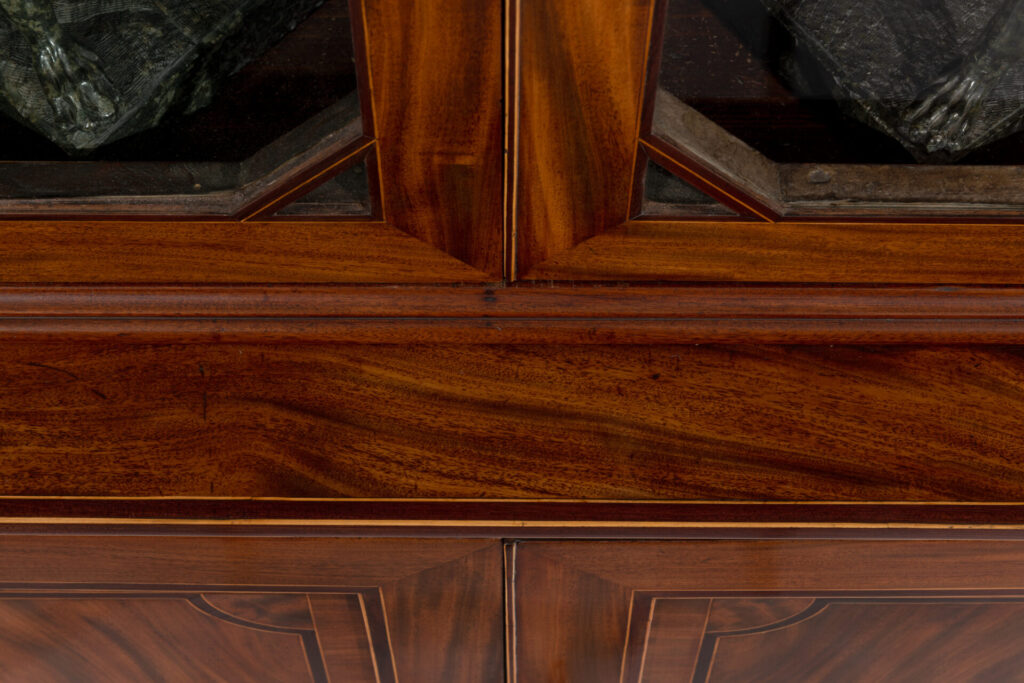
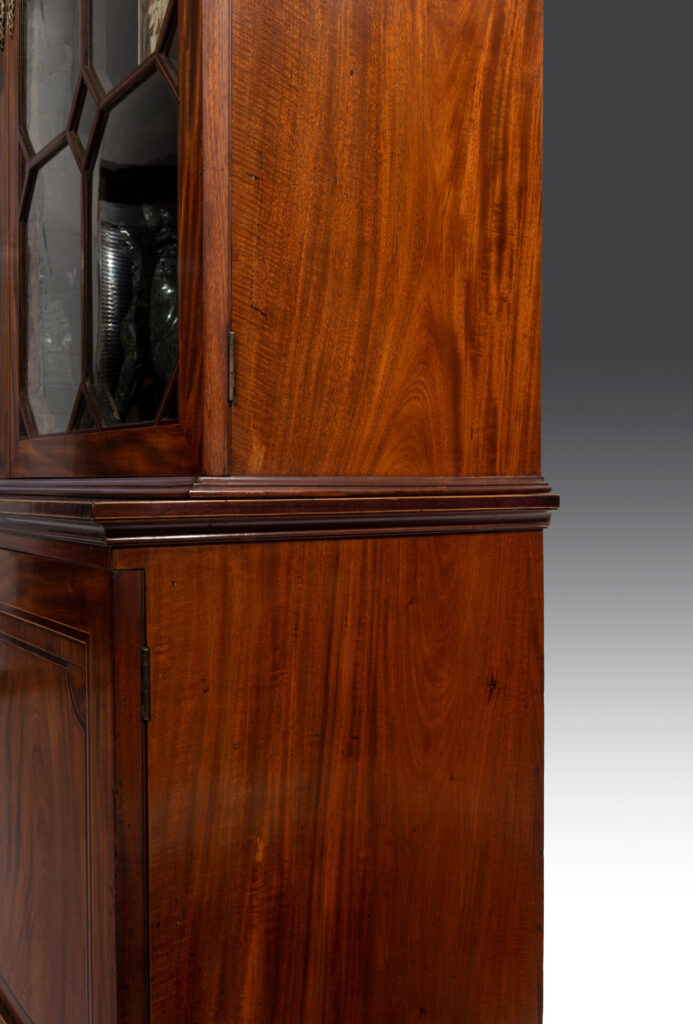
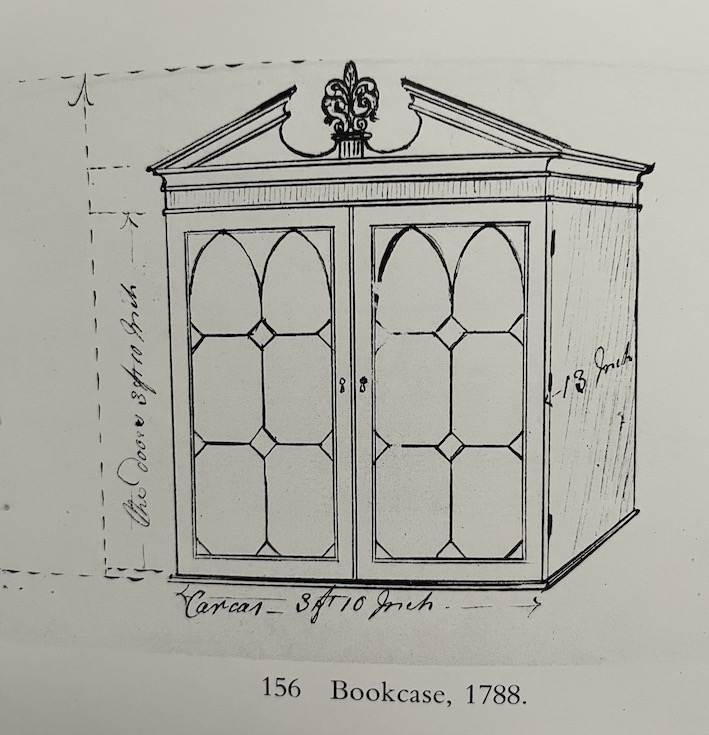
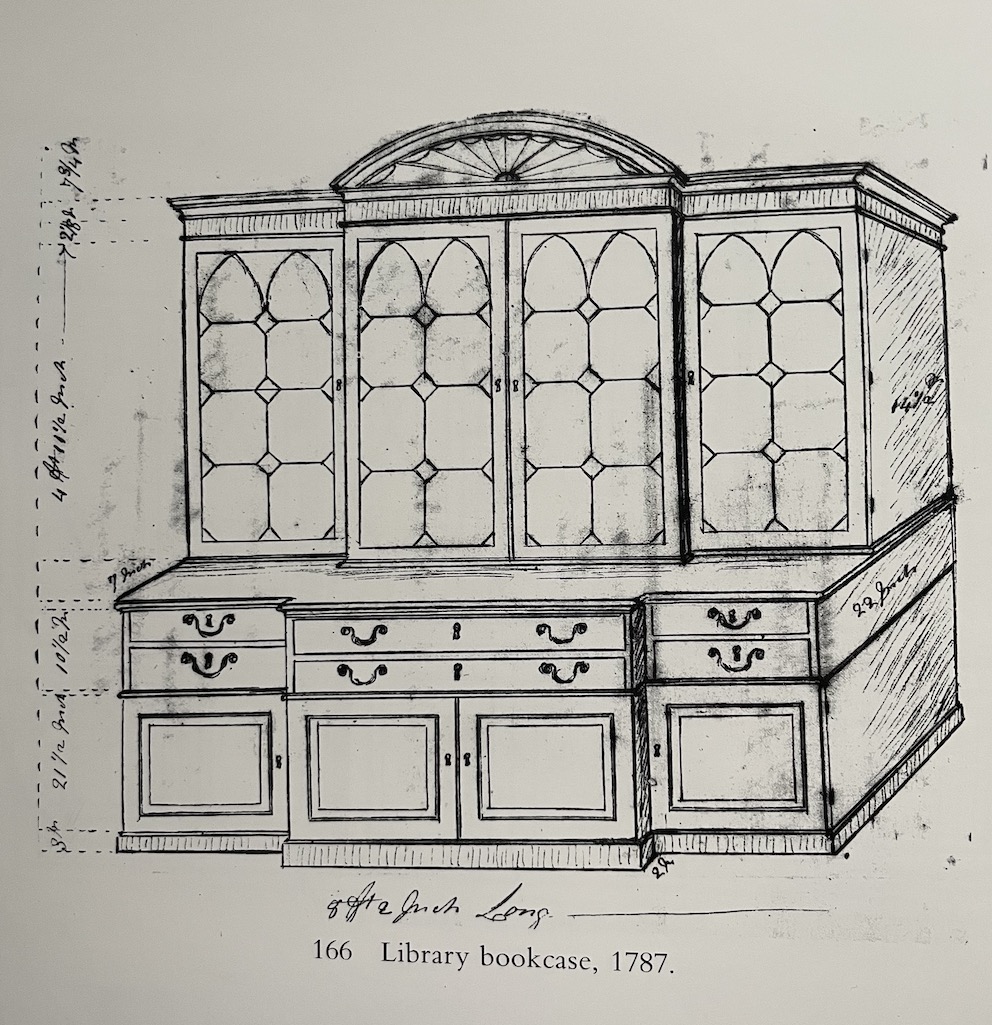
18th Century Bookcase
English
circa 1780 - 1790
Late George III 18th century two door mahogany and purpleheart inlaid bookcase attributed to Gillows of London and Lancaster.
The moulded cornice sits above a vertical flamed mahogany veneer crossbanded with boxwood stringing and purpleheart. The same crossbanding is above the vertical veneers.
The astragal glazed doors open to reveal the original three solid oak and mahogany tipped shelves. These can be adjusted easily with the individual slats that have been fitted to the bookcase, all original to the time of manufacture. The astragal glazed design is seen in the Gillows sketches that we have illustrated with the stock item. The panes of glass are nearly all original, with the mahogany framed doors supporting broad purpleheart and boxwood strung glazing bars. They are deliberately wider to show off the purpleheart.
The bookcase sits on a figured inlaid mahogany shelf above two cupboard doors. The flamed mahogany inset panelled doors open to reveal a bank of oak-lined and mahogany front drawers. The drawers are fitted with the original gilt brass swan neck handles.
The bookcase is unusually veneered in figured mahogany to the sides and is raised on ogee feet, flanked and decorated with a shaped apron and crossbanded purpleheart veneers.
NB. The bookcase is low waisted and elegantly scaled in proportion. A very fine 18th Sheraton period century bookcase.
Condition
Excellent
Literature
Reference:
Gillow Furniture Designs 1760-1800, Edited and introduced by Lindsay Boynton.
The Gillow sketches attached relate to the current bookcase and the attribution of Gillow.
Gillows of Lancaster and London, also known as Gillow & Co., was an English furniture making firm based in Lancaster, Lancashire, and in London. It was founded in Lancaster circa 1730 by Robert Gillow, (1704-1772).[1]
Library table, made by Gillow to a Chippendale design, on display in the Judges' Lodgings, Lancaster.[2]
Gillows was owned by the family until 1814 when it was taken over by Redmayne, Whiteside, and Ferguson; they continued to use the Gillow name. Gillows furniture was a byword for quality, and other designers used Gillows to manufacture their furniture. Gillows furniture is referred to by Jane Austen, Thackeray and the first Lord Lytton, and in one of Gilbert and Sullivan's comic operas.[3][a] In 1903 Gillows merged with Warings of Liverpool to become Waring and Gillow and although the furniture remained of a high quality.
Dimensions
Height 217.00cm (85.43 inches)
Width 124.00cm (48.82 inches)
Depth 48.00cm (18.9 inches)
Stock No: 11419
Sold
